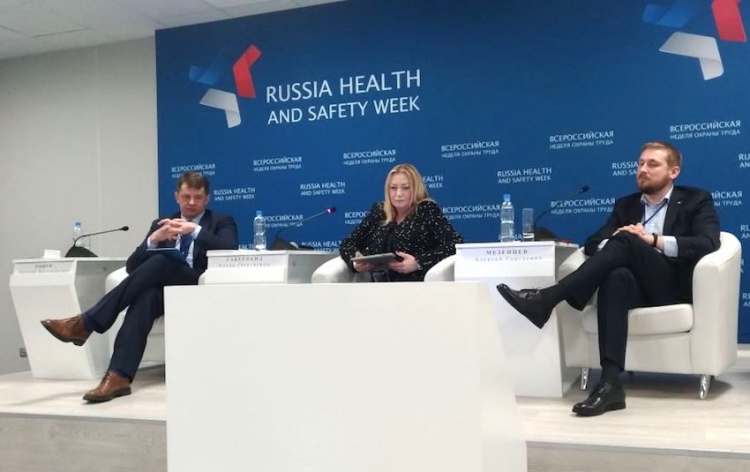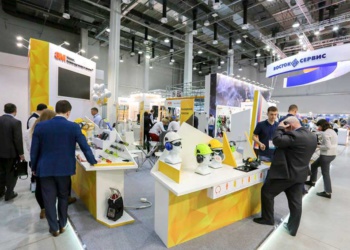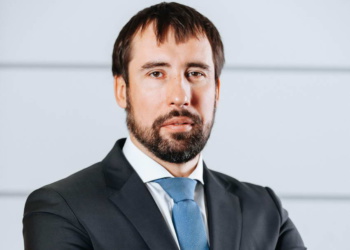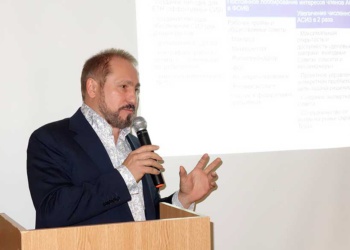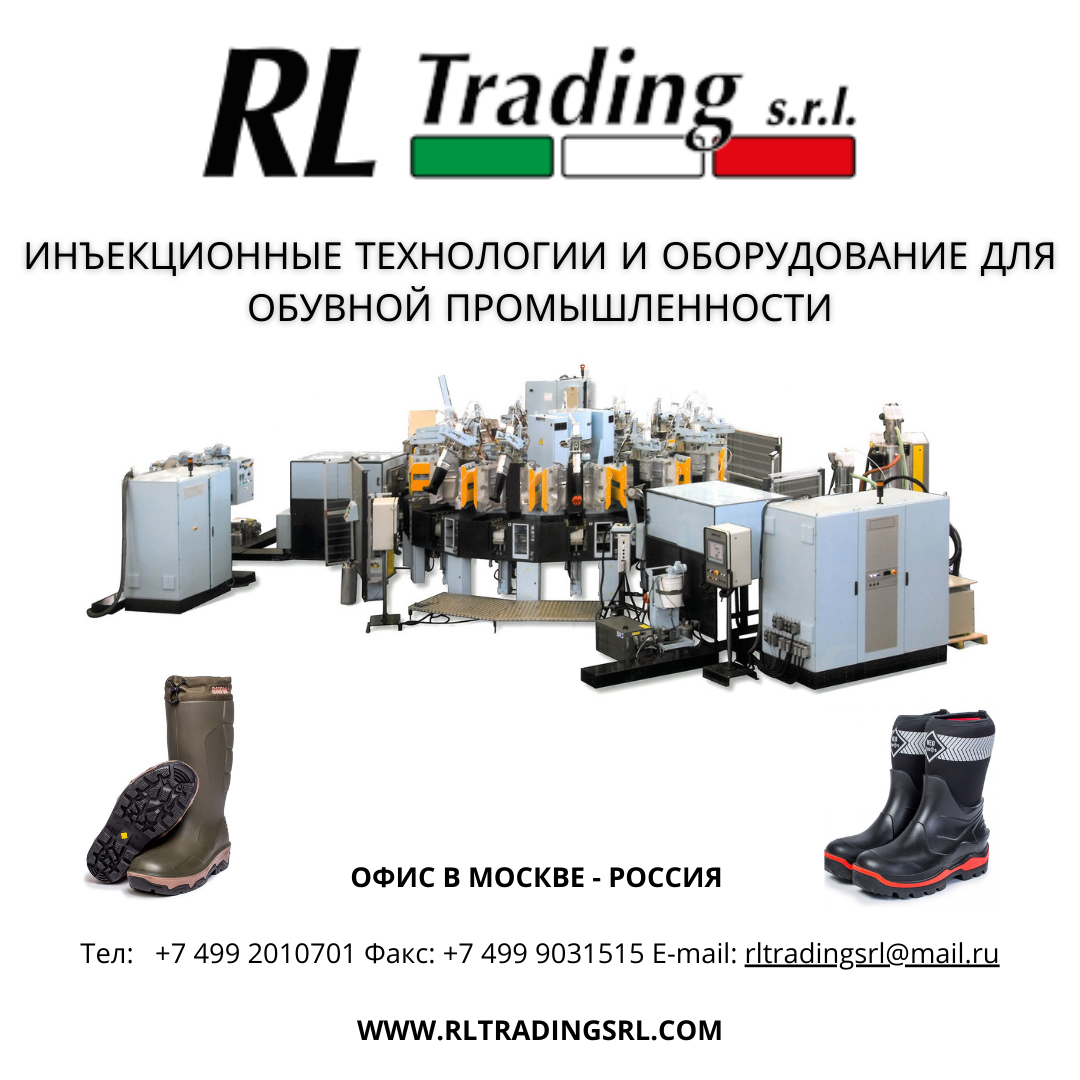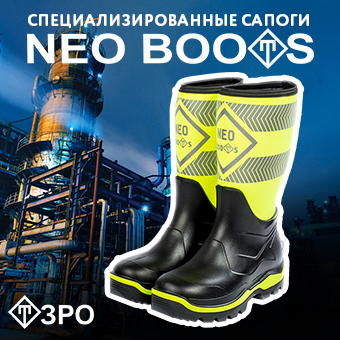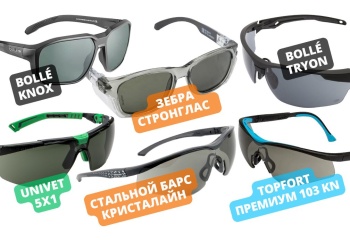It is unlikely that anyone would argue with the advisability of using high-tech PPE at workplaces especially if these PPE are made in Russia. The state in every possible way supports the manufacturers of innovative PPE. However there has not been witnessed a general change towards them. What’s stopping the process? This issue was discussed at the All-Russian Occupational Safety and Health Week in Sochi. The Commercial Director of the non-woven fabrics Plant «Wes Mir», Elena Gaberland who moderated the meeting told Getsiz.ru about the main difficulties in introducing the advanced means of protection.
Lack of domestic raw materials
This is one of the reasons why Russian made products are not always cheaper than the similar imported products. Raw materials for many popular products are not manufactured in Russia. So they have to be imported which naturally affects the production cost.
Now the State says: «You must export». OK, but in order to do this you have to import raw materials first, then to manufacture the product, and after that to deliver it back to Europe. If the source materials were of Russian origin, then the readymade products of Russian manufacturers would be more promising for promotion on the European market. Of course, there are positive changes: we see that the leading Russian PPE companies made the transition to Russian production their strategic goal. And this is a remarkable trend. For example, Vostok-Service started the production of protective gloves in a complete cycle. Energocontract continues to invest in the production of a full range of fire-resistant fabrics and knitwear. Tchaikovsky Textile develops and manufactures high-tech fabrics. We FNM “The Entire World” also continue to invest in the latest equipment and develop our own materials.
By the way, foreign companies that have been working on the Russian market for a long time are expanding their cooperation with Russian companies and investing in local content. Take UVEX as an example. But I think that the issue of high-tech raw materials remains relevant for everyone.
Potential customers are poorly informed
It is not enough to release an innovative product: it is necessary that potential consumers learn about it. Purchasers and end users of PPE often have quite insufficient information about innovations and interesting new PPE produced in the framework of the import substitution program. This is especially true for small and medium-size companies. And in fact in these companies there are more and more people who understand the effectiveness of high-quality PPE and who would be ready to purchase them. But when we look at the awareness situation of the major players on the market we can state that it is far from brilliant.
For example, let us consider one of the largest oil and gas companies, which name in this case is irrelevant since the situation is quite typical. It has three suppliers, and none of them is among the leaders on the PPE market, I mean the leaders in the production and promotion of new highly effective products. In other words these suppliers simply prefer to sew workwear in the average price segment according to the technical requirements of the customer with whom they have a history of good relations. In this case such suppliers won’t be interested in changing the situation since they cannot work with the innovative materials. It is clear that they won’t inform the customer about the new materials, but moreover they can also interfere with their introduction.
Or take, for example, an oil worker’s winter suit with an embroidered company logo on the back of the jacket. Each puncture with a needle piercing the fabric forms a micro-hole that lets moisture and cold in, eventually making the product untight and thus low-efficient. However in this case a logo could be applied on a reflective film with thermoactive basis without violating the integrity of the fabric. But the application of such film requires a special thermo-press, reflective film and a different technological process. And for this «old» supplier it is completely unavailable and unprofitable. Although for the customer this is not even a question of money, but a question of lack of offer and lack of information about a more effective solution.
Commercial Director of the Non Woven Fabric Plant «Wes Mir» Elena Gaberland.
Another example: a flame-retardant suit. After a proper checkup it may well become clear that this suit has a non-fireproof zipper and sewing threads, or its insulation is below class III protection. Which makes it a not a flame-retardant suit. And such cases are constantly disclosed during checks of products locally.
It is not enough to help customers to understand the standards for finished products, it is also important to inform them about new materials and innovative products.
Insufficient motivation
Today there are no tools that can motivate a customer to purchase innovative PPE. End users say: «You offer a garment that is a hundred times better than the one I’m using now. OK, I’ll buy it. Yes, it is more expensive but really good. What’s next? According to the law the rate of issuing workwear is one year. After that I am to throw this garment out, although it’s still good and can be worn for two years more. So what’s the point of overpaying?”
Thus we can conclude that the rates of issuing workwear should be flexible. If you buy cheap stuff – one type of rate should apply to you, you buy expensive high-tech PPE – another rate should count for you. Risk-oriented approach implies the cancellation of the rates of issuance, but it does not change the service life of PPE.
Another example: our company has developed a unique insulation made of carbon fibers. We have received a world patent for it. Carbon does not burn, but it is clearly more expensive than the usual materials, as the fibers are produced in Japan and the raw materials themselves are more expensive. However, the properties that the product shows are simply stunning, exceeding all possible characteristics. The product provides an increased and guaranteed protection performance against open flame and thermal risks. How to motivate customers to use this product? At the moment it is possible only by informing them and counting on the high level of production culture and the orientation of the company towards maximum protection of its employees against all types of risks.
In my opinion companies should receive some benefits for the use of innovative PPE. If a company can prove that by introducing innovative PPEs it has enhanced safety at workplace, it should be allowed to purchase such protection equipment according to a special program and norms.
Conclusion
Steps towards import substitution are being taken, the movement has started, and it’s wonderful, but the whole puzzle has not yet been put together. The ministries are doing what they can for their part, but the relevant tools are out of their scope of competence.
The development of mechanisms should be handled by experts. Our common goal is to give the state a good solution, which will then be introduced in the market, and become the engine of this solution.



